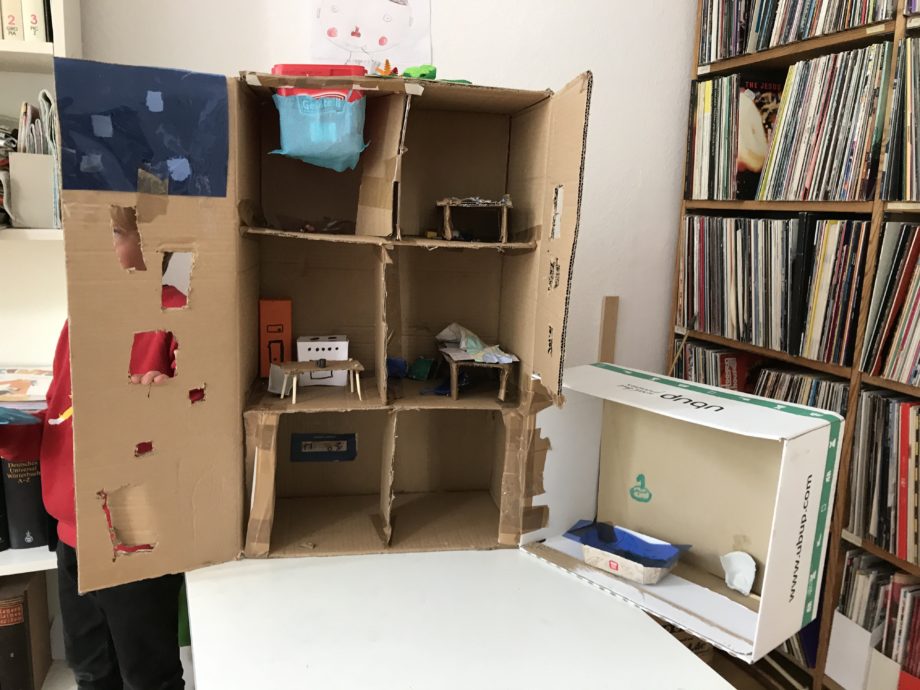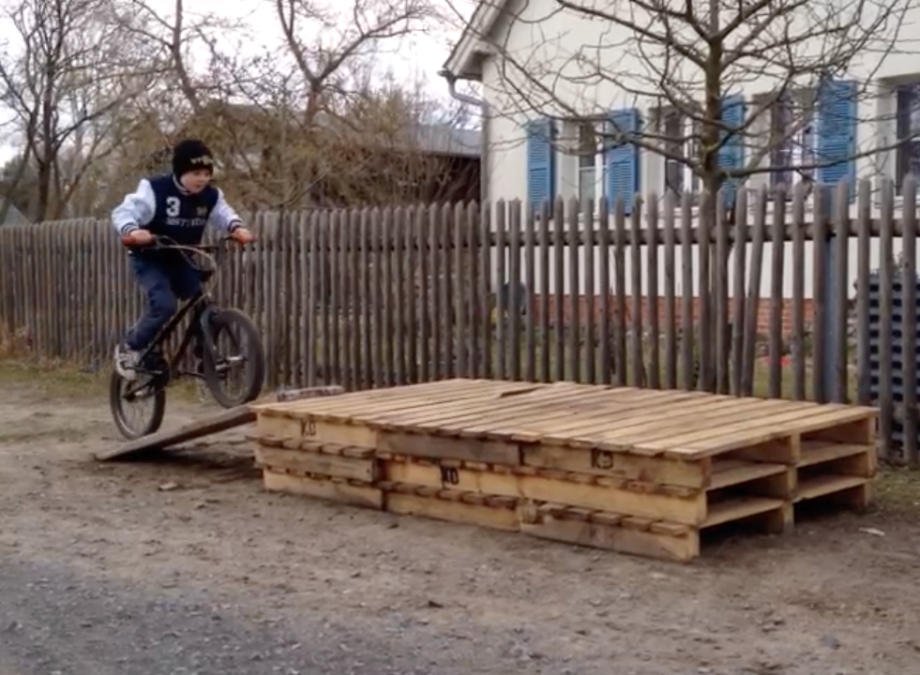Observing the narrative in-between space of research in schools during lockdown
My research project
In my work I explore performative language learning in diverse classrooms. This work takes place in Poland, the Czech Republic and Germany and often includes gathering qualitative data, such as child narratives, within the context of controlled experiments on foreign language learning. On 17 March 2020 the city of Berlin closed all schools for five weeks. During the lockdown, I was forced to discontinue work intended to use pictures, gestures and drama to build on previous research (Janzen Ulbricht 2020). Given the fact that schools were empty and my experiment indefinitely on hold, the lockdown created a possibility to interview children, parents and teachers about their experiences with their new situation – teaching and learning at home. Although the concept of ‘giving voice’ is contested in ethnography (Croegaert 2020), there is also agreement that narratives can make visible relationships between people, what they think and their environment (Hill 2005). In this blog post I will reflect on the concept of narrative in-between space of research and share several encounters from this private social sphere created by the pandemic. I find the concept interesting because I have noticed differences between the qualitative data that I’m allowed to collect when I apply for a study (e.g. interviews with teachers or focus groups with children where I’m required to write out more or less exactly what I wish to ask), and the more spontaneous exchanges presented here in their ability to reveal dynamic teaching and learning situations.
What is narrative in-between space?
Kinnunen and Puroila (2016) have been influenced by Caine’s (2007) concept of narrative in-between space, according to which narration provides a space that lies in between researchers and participants where lives unfold in relation to each other (2016: 238). Accordingly, research is not understood as a process of directly transferring information from a child or teacher to a researcher, but rather, that knowledge is jointly constructed in encounters between individuals in the narrative in-between space. Despite the fact that the social and relational dimension of the narrative in-between space is key, the significance of the physical and material environment also cannot be ignored.
Also related to knowledge construction, Biswas highlights the possibility of approaching research not as facing a particular problem to be solved, but as „participating in the mysterious“ (2020: 77) Echoing some blog posts in this collection, she cites Gallacher and Gallager’s (2008) approach of muddling through research with ignorance as a promising starting point. In this way data is not forced to become a building block which produces research results, but can be seen as a way to sustain a source of productive questioning (Biswas 2020) which can include emotions as they arise in encounters with others (Stodulka et al. 2019).
For the interviews I conducted I relied on my existing social networks and knowledge of the educational landscape in Berlin to recruit interview partners. This included students and teachers from public and private schools in Berlin, from both the primary and secondary levels of education. This blog post is based on a sample of these interviews gathered in the spring as well as follow-up conversations in the fall of 2020 and aims to relate challenges and questions that came up for me as well as my interview partners.[1]

Image 1: Taken while giving a presentation at home, this picture portrays a boy explaining the features of a house he made as part of his schoolwork. Like the figure of this boy here, sometimes even a direct glimpse is partial. Photo: Private, used with permission.
Es hat sich nichts geändert
Transferring the concept of narrative in-between space to schools under lockdown obviously changes the physical location where conversations take place. School now means a learning experience at home. The interview with Alice takes place in an open space, on a sidewalk while she watches her three children playing in the street, made safe and available because of the lack of traffic. In this place what Alice says is supplemented by her children who are free to run and skateboard in and out of the conversation, volunteer their opinions as they see fit, and then leave again. These ambient sounds, interruptions and added thoughts change the narration process (see also Ochs und Schieffelin 2011) resulting in details that Alice likely would not have thought of on her own.
One example of this co-creation takes place when I ask how English lessons have changed. After Alice’s son Raphael gives several examples of school work, such as being assigned to do a crossword puzzle, learn an Easter song and construct and present a cardboard house he built to his English class (see Image 1), he reflects and says that learning is fun and that actually nothing has changed.
Raphael: Em, es macht eigentlich auch Spaß und es hat sich nichts verändert.
Alice: Vielleicht, die Schule hat ein Lernportal, also einen geschütztes irgendwie Schulportal…
As can be seen from overlapping speech in the transcription (see Image 2), Alice begins speaking before Raphael has finished. She goes on to explain that the school her children attend had a functioning online learning platform teachers and students were familiar with before the pandemic began. This information provides context to Raphael’s comment that “nothing had changed” even though the conversation takes place in a location he and his siblings don’t usually use for play at a time when they hadn’t physically been to school for almost three weeks. The fact that this private school has a learning platform which was familiar before the pandemic was unlike the situation of many teachers and families at public schools. Multiple factors have contributed to fear surrounding a potential second school lockdown in Germany, with a lack of access to functional learning technology being one of them.

Image 2: Screenshot of an interview transcription recorded on the street during lockdown. Motion and interruption can be seen in the form of strangers walking by and overlapping speech. Photo: Natasha Janzen Ulbricht.
Alles hat sich geändert
Transferring the concept of narrative in-between space to schools under lockdown changes not only the physical locations where conversations take place, but can also change the medium. Sophia is an English teacher at a primary school who answered my emailed question “What has changed since the lockdown?” by sending an audio recording to my phone. In her monologue she talks about the video messages she uses to make sure her students can see her and receive face to face encouragement. From another primary school, Beth reports sadness at having completely lost contact with her class during the lockdown. “I wrote an email to all of my students and none of them wrote back.” In a follow-up call with Sophia after the lockdown, she reported feeling satisfaction that some of the things she tried and received criticism from her colleagues for, like asking students to take pictures of themselves doing something at home, or doing sports together as a class online, have since been taken up in a school wide catalogue of good ideas for teaching in the event of another school lockdown.

Image 3: This image of a boy in front of his home is taken from a short film where he rides into the picture and jumps over an obstacle with his bike. Filmed by a parent, this video was made in response to a teacher asking her class to “Show me something you do at home.” during lockdown. Photo: Private, used with permission.
Current status
My experiment was scheduled to begin several months ago. The emotional up and downs of hearing that colleagues‘ projects have been canceled, receiving permission to conduct my own, but not knowing if it will really take place is difficult. Despite the pandemic I have hope to continue, but it is hard to know if this is justified optimism, academic pressure to perform enthusiasm, or simply being naive. My current situation, like the street-side interview, is influenced by unexpected motion and interruptions. At the same time, as in the case of Sophia, positive resonance for things others don’t initially understand may come later. The chance to reflect on the narrative in-between space of research allows me to share the intuition of children, parents and teachers as they reflect on and shape learning processes. A definitive answer on if these narratives reveal practical insights useful for teaching or, at a more fundamental level muddle through to further questions is only partially visible.
Written on 7 November 2020, revised on 18 November 2020.
Natasha Janzen Ulbricht is a doctoral candidate at the Freie Universität Berlin in the Department of Philosophy and Humanities. Before that she studied applied linguistics and worked in the development sector in Zambia. Her research interests include gesture and foreign language learning as well as teaching in difficult circumstances. Contact: nju@zedat.fu-berlin.de
Footnotes
[1] As is common in ethnography, names are changed and teachers are presented in composite characters in order to protect the anonymity of their places of work.
References
Biswas, Tanu 2020. Little Things Matter Much: Childist Ideas for a Pedagogy of Philosophy in an Overheated World. Munich: Büro Himmelgrün.
Caine, Vera 2007. Dwelling with/in stories: ongoing conversations about narrative inquiry, including visual narrative inquiry, imagination, and relational ethics. (PhD Thesis). Edmonton, Alberta, Canada: University of Alberta.
Croegaert, Ana 2020. Bosnian Refugees in Chicago: Gender, Performance, and Post-war Economies. London: Rowman & Littlefield.
Gallacher, Lesley-Anne & Michael Gallagher. 2008. Methodological Immaturity in Childhood Research?: Thinking through ‘participatory methods’. In: Childhood, 15 (4), 499–516. [https://doi.org/10.1177/0907568208091672]
Hill, Jane (Ed.) 2005. Finding Culture in Narrative. In: Finding Culture in Talk: A Collection of Methods. New York: Palgrave Macmillan, 157–202.
Janzen Ulbricht, Natasha 2020. The Embodied Teaching of Spatial Terms: Gestures Mapped to Morphemes Improve Learning. Frontiers in Education, 5 (109), 1–13. [doi.org/10.3389/feduc.2020.00109]
Kinnunen, Susanna & Anna-Maija Puroila, 2016. ‘If my sister was here’ – The narrative in-between space in young children’s photography process. Childhood, 23(2), 236–254. [https://doi.org/10.1177/0907568215602317]
Ochs, Elinor & Bambi B. Schieffelin, 2011. The Theory of Language Socialization. In: Duranti, Alessandro, Elinor Ochs & Bambi B. Schieffelin (Eds.), The Handbook of Language Socialization. Wiley, 1–21. [https://doi.org/10.1002/9781444342901.ch1]
Stodulka, Thomas, Samia Dinkelaker & Ferdiansyah Thajib (Eds.) 2019. Affective Dimensions of Fieldwork and Ethnography. Cham: Springer International Publishing. [doi.org/10.1007/978-3-030-20831-8]































